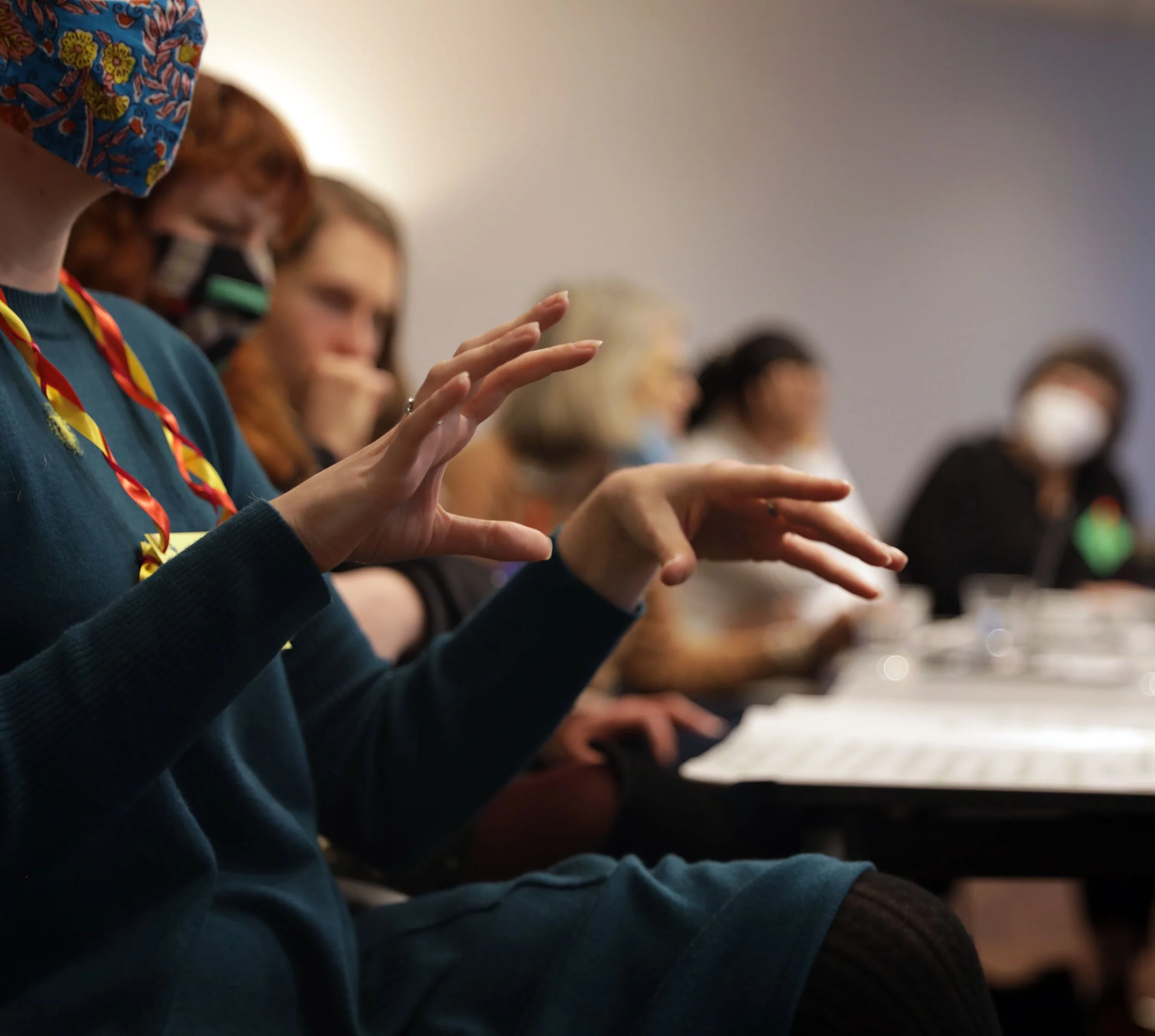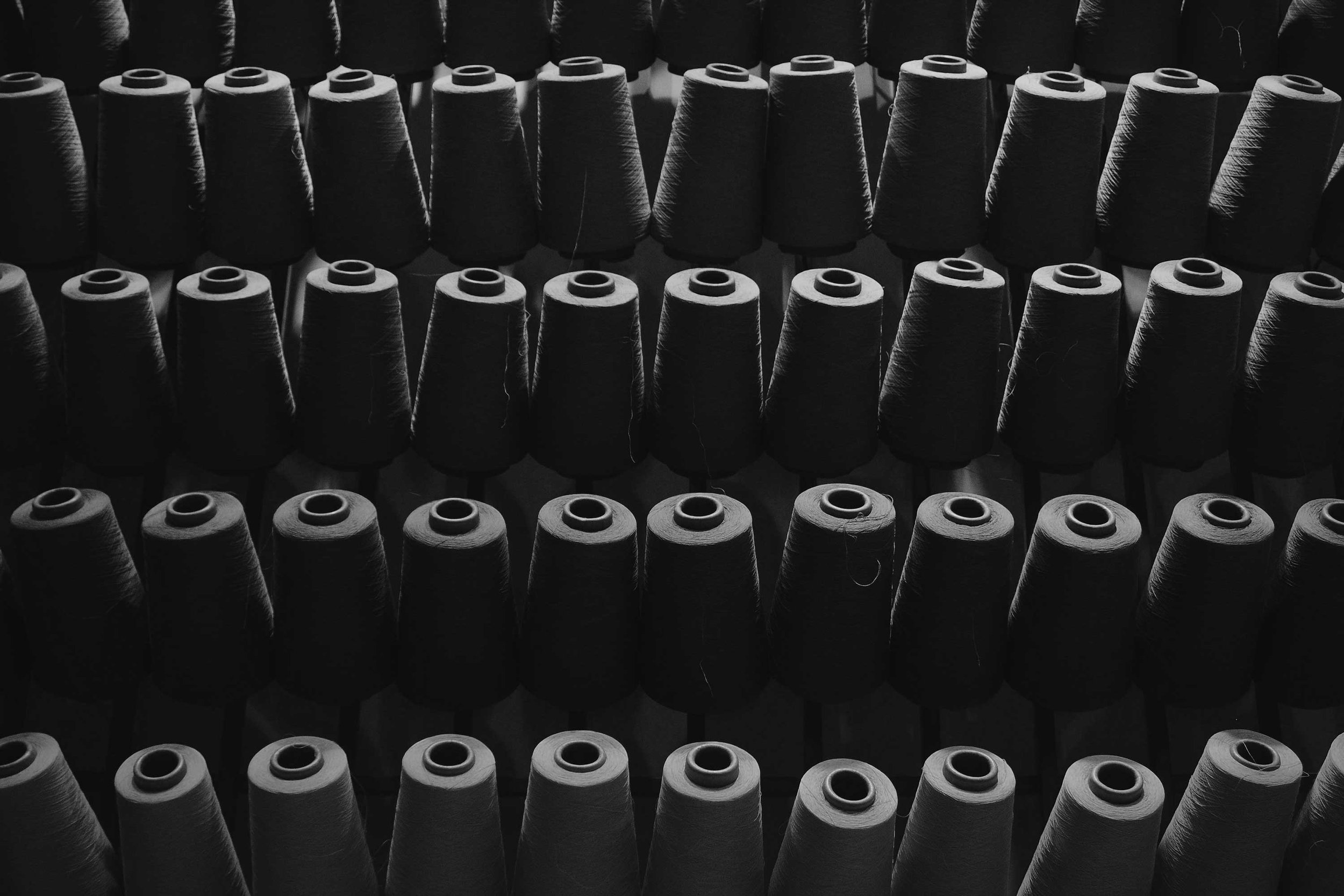Questions
We offer the following questions to our members to open a dialogue with organisations about their work. We are concerned about the disconnect in contemporary sustainability initiatives between front-facing messaging and genuine behind-the-scenes change. These questions aim to keep the root causes of unsustainability and the complex work of systems change at the forefront of discussions about sustainability in fashion.
-
Turning the question to ‘change in action’ by asking ‘How...?’
Using any question to refocus a conversation at a deeper level about the underlying system or paradigm effects.
Using details or specifics to show the system challenge, underlying or unconsidered assumptions and/or cumulative effects.
-
How does your organisation take actions for long term and permanent structural change in the fashion industry, so supply chain workers are not placed in precarious positions? With whom do you build partnerships to bring this permanent structural change?
Do you track, measure, and disclose real change across your supply chain in terms of fair, safe and equal treatment of workers and farmers? How?
Does your organisation empower suppliers (for example, by ensuring living wages for workers, providing soft loans to producers, and profit sharing)?
Does your organisation support unionisation amongst workers in your supply chain?
Do you have contracts which include kill fees for cancelled orders?
-
Within the discourse on sustainable fashion, there is an evident tendency to preach abstinence and resource austerity to the global South. How does your organisation center diverse voices, including workers and marginalised communities?
How do you integrate these communities into your decision-making?
How do your initiatives work to lessen, rather than grow, social inequality?
-
How does your organisation prioritise the scaling down of new product production volumes, as we transition out of the current waste-generating consumer economy?
What is your strategy on responsible reallocation of jobs and application of knowledge and skills as we transition out of the industrial and consumer economies?
How, in the post COVID-19 economy, does your organisation contribute to a responsible level of global resource demand that at the same time maintains income streams?
-
While transparency continues to be a popular term, it does very little to keep business within the natural limits of earth’s resources. No current index links a company’s use of resources to the earth’s capacity to supply those resources.
How do you think current indexes can be amended to include real ecological limits, acknowledging that planetary boundaries are concrete?
How can indexes be amended to reflect hard-to-measure, context-specific, knowledge-contingent social innovation that occurs in local settings and is not captured by one-size-fits-all assessment tools?
Do you agree that actual volumes that are produced should be included in the evaluation of companies’ environmental performance? What are your ideas to include volume?
As indexes are rolled out more broadly, how do you think they can they avoid amplifying the biases involved?
How do you think indexes can become more diverse in their assumptions and favour plural responses and actions?
-
Circularity is a popular concept.. The promise of circularity is to make all outputs from producing products into inputs for new ones (like a complex ecosystem). This suggests a level of control over a system that the fashion and textiles sector does not have. Moreover, the industrial infrastructure for achieving circularity does not yet exist.
What is your company doing to help create the infrastructure for circularity?
When you use the word circularity, what do you actually mean?
How does your organisation operationalise circularity that would benefit the resilience and positive impact of the system as a whole?
How do you propose to control the return of unwanted textile products from (globally distributed) homes back into your industrial system?
How are you drawing down production of virgin fibre garments? Please be specific.
How does your organisation ensure that no product is produced unless it is connected to a viable circular/takeback system?
How does your organisation link increases in your resale business to decreases in virgin product business?
How do you measure the total percentage of recycled fibre and new fibre in your business (not by product) and how do you disclose this information to the public?
How do you track and trace globally sold and distributed garments and the total percentage of the business (rather than number of products) brought into reuse as well as recycling systems?
Can you confirm that you do indeed receive all (globally distributed) goods back for resale and recycling? Is this really possible?
How do you train your design team to design for product circularity and for a circular business model? (i.e. not simply use fabrics that are a percentage recycled) Can you be specific about how this focus changes the design process?
How have you engaged your suppliers at different tiers to help plan reduction in new products in line with the increase of resold products?
Since the infrastructure to ensure true circularity of materials does not yet exist, do you agree the term is being used prematurely in brand marketing claims? Can you make a public commitment to not do this?
-
What percentage of your supply chain is fully transparent and traceable and what percentage remains opaque and not traceable? How do you track and disclose this?
How do you suggest consumers act upon the information and traceability you disclose? In what way does the information help change towards more sustainable consumer behaviours?
Overall, what are the actions that have been taken? What are the real gains (as a company) that have been made (or not), and what are the real challenges that still need to be tackled?
Questions updates
MANIFESTO #06
Dẫn đầu tranh luận
Giữ vai trò tiên phong trong việc tranh luận về các ý tưởng mới và hiện có, đồng thời tạo ra các hành động xoay quanh chủ đề thời trang bền vững, đặc biệt trong các lĩnh vực cần kiến tạo kiến thức mới.
– Vietnamese

Carmen Artigas: We are a few harvesting cycles away from losing the indigo crop in Mexico. This ancestral crop creates the natural indigo dye, which dates back to pre-Hispanic times and is kept alive by a handful of farmers in Oaxaca. Credit: carmenartigas–indigofield.



